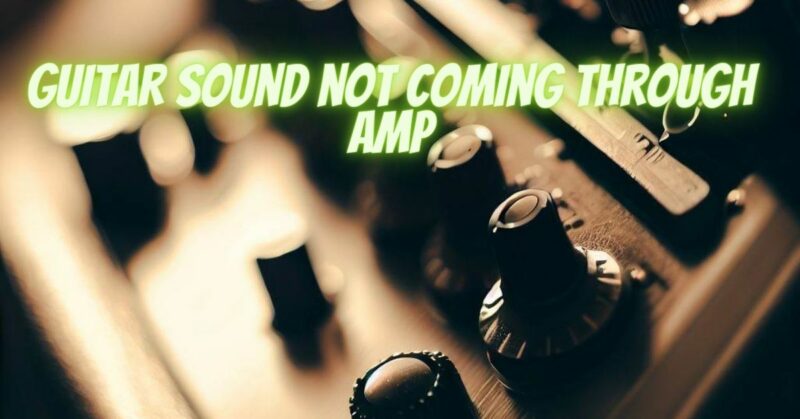There’s nothing more frustrating for a guitarist than plugging in their instrument, turning on the amp, and finding no sound coming through. This issue can be caused by a variety of factors, ranging from simple cable problems to more complex technical issues. In this article, we’ll explore a step-by-step troubleshooting guide to help you identify and resolve why your guitar sound is not coming through the amp.
- Check the Basics:
Before diving into complex troubleshooting, start with the basics:
a. Power: Ensure that the amp is properly connected to a power source and turned on. Check the power cable and outlet for any issues.
b. Volume: Check the volume and gain settings on the amp. If the volume is too low, you may not hear the sound.
c. Guitar Cable: Verify that the guitar cable is securely plugged into both the guitar and the amp’s input jack. Try using a different cable to rule out any cable-related problems.
- Test Other Instruments:
If possible, test another instrument or a different guitar through the same amp. This will help determine if the issue is specific to the guitar or if it’s related to the amplifier.
- Test Different Amp Inputs:
Many guitar amps have multiple input jacks, such as “High” and “Low” inputs. Make sure you are using the appropriate input for your guitar. If your amp has multiple inputs, try them all to see if the sound comes through on any of them.
- Check the Guitar:
a. Pickup Selector: If you have a guitar with multiple pickups, check the pickup selector switch. It’s possible that the switch is in a position where the pickups are not active.
b. Volume and Tone Controls: Verify that the volume and tone controls on your guitar are turned up and not muted. Sometimes, players accidentally turn down these controls, leading to no sound output.
- Internal Amp Issues:
If the above steps don’t resolve the problem, there may be internal issues with the amp:
a. Tube Amps: If you have a tube amplifier, check the tubes for signs of damage or failure. Faulty tubes can lead to no sound or poor sound quality.
b. Speaker Connection: Inspect the speaker connection to ensure that it’s secure. Loose connections can result in sound loss.
c. Fuse: Check the amp’s fuse to see if it’s blown. A blown fuse can prevent the amp from producing sound.
d. Circuit Issues: Internal circuitry problems can cause a lack of sound output. If you suspect internal issues, it’s best to take the amp to a qualified technician for diagnosis and repair.
- Pedals and Effects:
If you use any pedals or effects between the guitar and the amp, test the signal chain without them. Faulty pedals or incorrect connections could be causing the sound issue.
When your guitar sound isn’t coming through the amp, troubleshooting the problem step by step can help you identify and resolve the issue. Start with the basics, such as power, cables, and volume controls. Test different inputs and instruments to narrow down the problem’s source. Inspect the guitar’s controls and pickup selector. If everything seems fine externally, consider internal issues with the amp, such as tubes, speakers, fuses, or circuitry. By following this troubleshooting guide, you can diagnose the problem more effectively and get your guitar sound flowing through the amp again, allowing you to continue playing and creating music with confidence.


